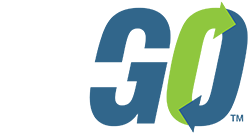The secret to successfully adopting a workforce management solution? Change management.
No matter what your business is hoping to achieve with its workforce management solution — controlling labor costs, minimizing compliance risk, or improving workforce productivity — it will only reach those goals only if your employees use the system properly and consistently. That’s why changing behaviors — at many levels — is key to 100 user adoption and successful implementation.
Effective change management can help you plan for transition, overcome obstacles and drive new behaviors. To make sure your project delivers optimum value, focus on three key areas:
Speed of adoption — how quickly workers are up and running on the new tools and processes relevant to their job rolesUltimate utilization — how many workers are demonstrating buy-in, and using the new tools and processes consistentlyProficiency — how effective workers are once they have adopted the new solution
So, where do you even get started? Change management typically occurs at three levels:
Cultural change involves a fundamental shift in the mission, values, and beliefs that drive the way an organization conducts business. It requires direction and involvement from senior leadership, and can often take years to accomplish fully.Organizational change focuses on making strategic decisions, with cascading impact. It requires buy-in, and reinforcement, at all management levels.Individual behavior change equips employees with the skills and abilities they need to do work in a new way. It’s the key to driving high user adoption rates, and achieving project-related business goals.
Because individual behavior change can happen much more quickly than cultural or organizational change — and is key to reaching goals — it’s definitely the place to start. How? Communication is key, and should ramp up throughout the five stages of the adoption process:
Awareness: Build awareness that change is coming and why — without getting into all the details.Understanding: Increase the frequency of your communications to improve understanding.Buy-In: Initiate more direct communications — potentially one-on-one — to engage individuals in the change process and explain how it benefits them.Action: Focus on learning, to ensure individuals have the skills and abilities to do what is expected of them once the change takes place.Reward: Ensure continued acceptance of the change by rewarding desired behaviors.
So, when it comes to driving individual behavior changes who’s best suited to lead your employees through the process? In most cases, it’s their direct supervisors, because they understand the best way to motivate, guide and reward their employees.
Are you ready to implement a change management approach in your business? To learn even more, . And to find out more about Workforce Go!, our automated workforce management solution, call us today at 214-800-5575.
